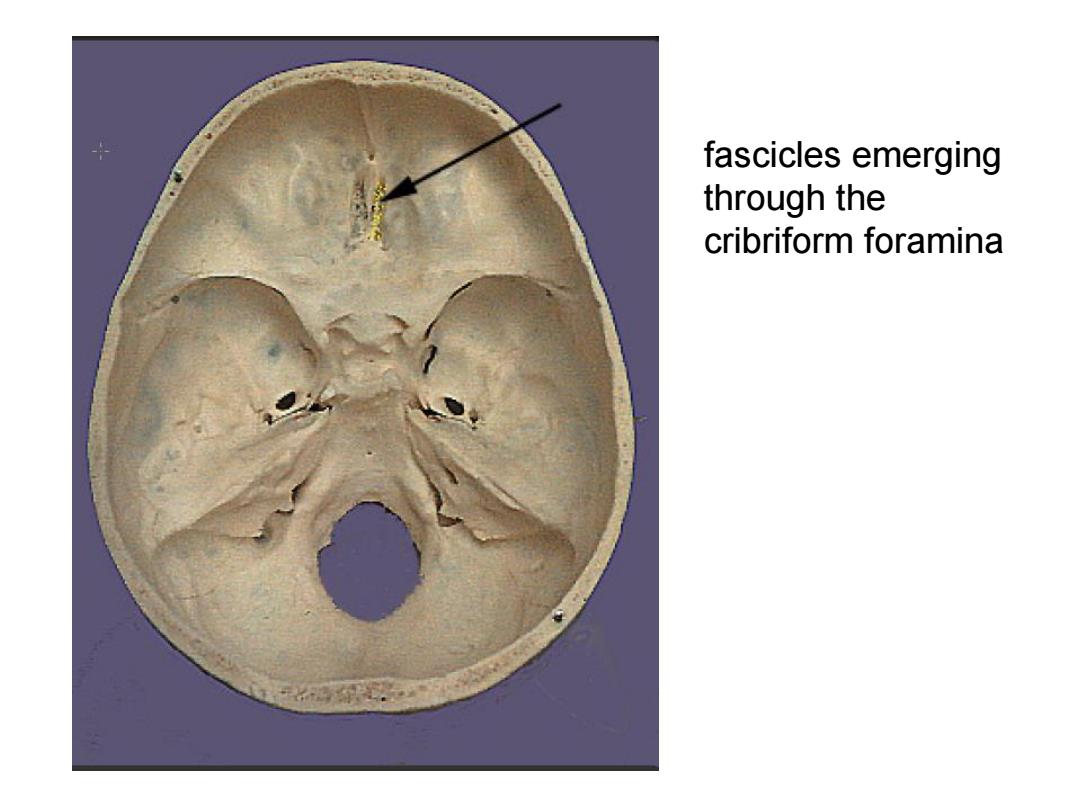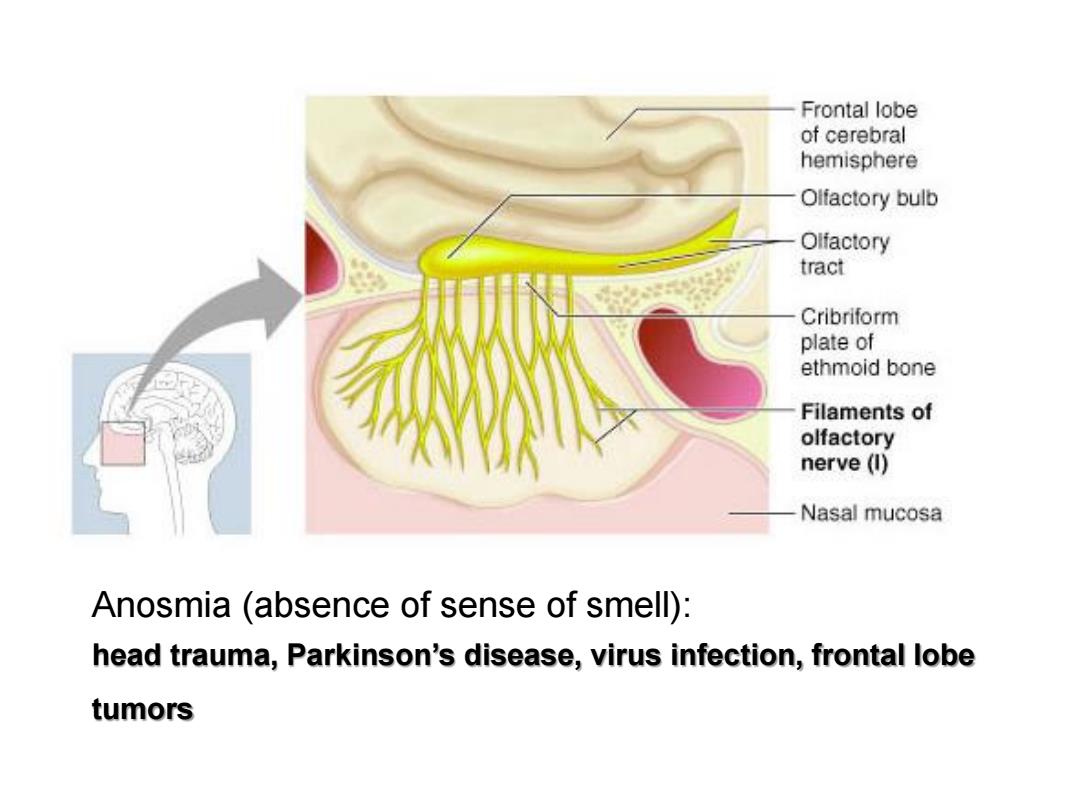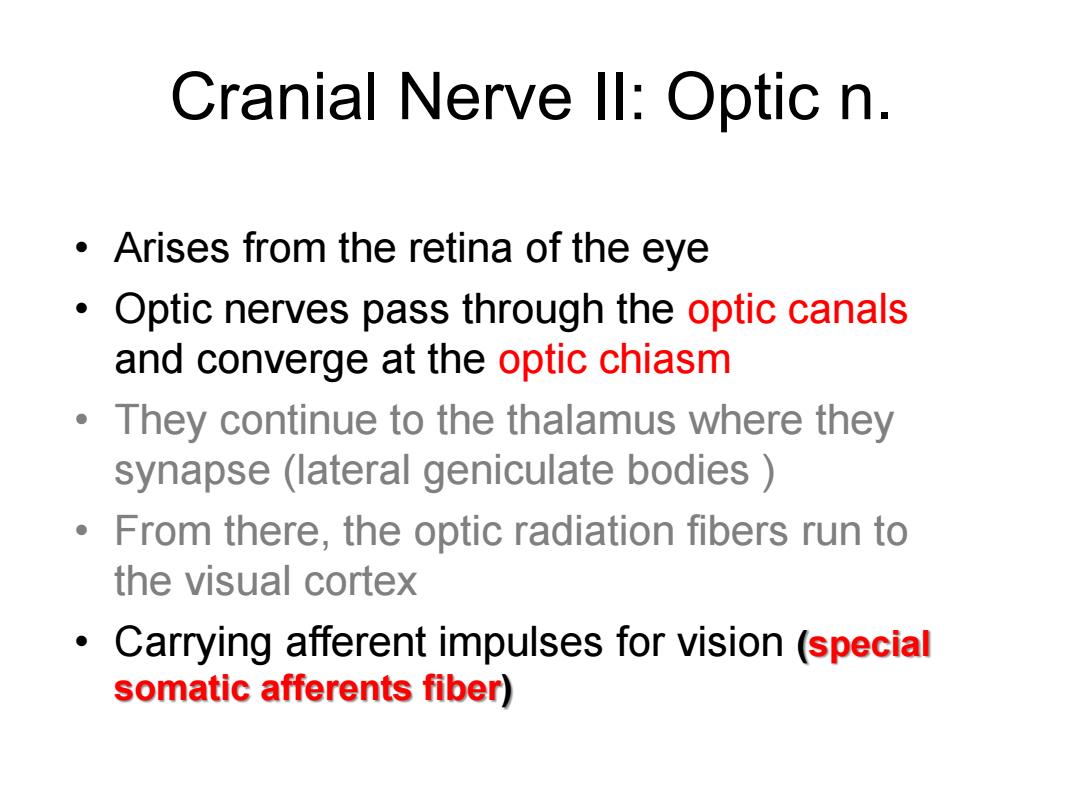
fascicles emerging through the cribriform foramina
fascicles emerging through the cribriform foramina

Frontal lobe of cerebral hemisphere Olfactory bulb Olfactory tract Cribriform plate of ethmoid bone Filaments of olfactory nerve (I) Nasal mucosa Anosmia (absence of sense of smell): head trauma,Parkinson's disease,virus infection,frontal lobe tumors
Anosmia (absence of sense of smell): head trauma, Parkinson’s disease, virus infection, frontal lobe tumors

Cranial Nerve ll:Optic n. ei2boyee Ottacory tract 8aoo Oculomotor nerve ICN l Trochlear nerve (CN IV) Sensory root Tngeminal Motor root nerve (CN V) Abducent nerve(CNV用 Facial nerve (CN VII) Intermediate nerve Vestibuloeochlear norve CN VIII) Vagus nerve (CN X) nerve CN X灯 cord
Cranial Nerve II: Optic n

Cranial Nerve ll:Optic n. Arises from the retina of the eye Optic nerves pass through the optic canals and converge at the optic chiasm They continue to the thalamus where they synapse (lateral geniculate bodies From there,the optic radiation fibers run to the visual cortex Carrying afferent impulses for vision (special somatic afferents fiber)
• Arises from the retina of the eye • Optic nerves pass through the optic canals and converge at the optic chiasm • They continue to the thalamus where they synapse (lateral geniculate bodies ) • From there, the optic radiation fibers run to the visual cortex • Carrying afferent impulses for vision (special somatic afferents fiber) Cranial Nerve II: Optic n

Cranial Nerve Il:Optic n. ganglion cells---optic nerve---optic canal---optic chiasma -pigment opithelialcl md cell Eyeball Retina Optic nerve(Il) Optic chiasma Optic tract -hipolar cell Lateral geniculate nucleus of thalamus canglion cell Optic radiation Visual cortex
Cranial Nerve II: Optic n. ganglion cells---optic nerve---optic canal---optic chiasma